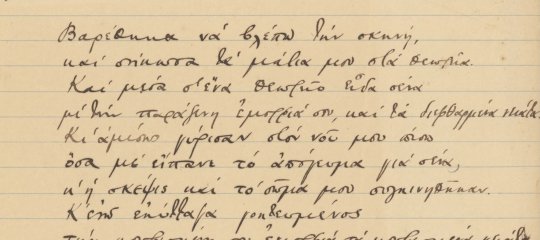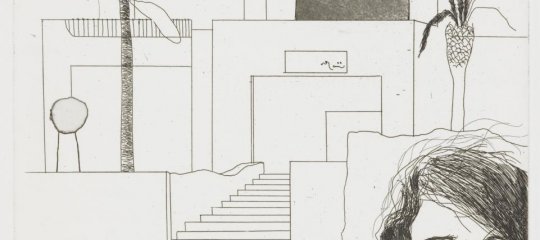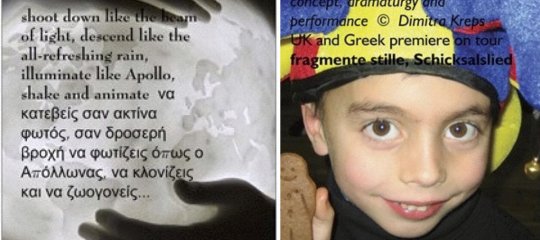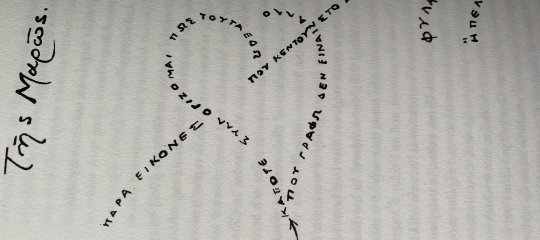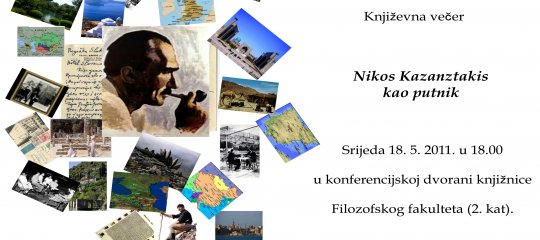Ο Νίκος Καζαντζάκης Ταξιδευτής
Η Ξανθή Ζαφειράκη (Ζάγκρεμπ) και η Βασιλική Βαρσαμακίδου (Λιουμπλιάνα) οργάνωσαν μια λογοτεχνική βραδιά για τον Νίκο Καζαντζάκη. Στα συνημμένα κείμενα μπορείτε να δείτε το πρόγραμμα και κάποιες φωτογραφίες από την εκδήλωση.
«Ο ΝΙΚΟΣ ΚΑΖΑΝΤΖΑΚΗΣ ΤΑΞΙΔΕΥΤΗΣ»
Εκδήλωση στη Λιουμπλιάνα και στο Ζάγκρεμπ
Ο Τομέας για την Ελληνική Γλώσσα της Φιλοσοφικής Σχολής στη Λιουμπλιάνα οργάνωσε στις 16 Μαΐου 2011, στον ιστορικό χώρο του Συλλόγου Σλοβένων Συγγραφέων λογοτεχνική βραδιά με θέμα: « Ο Νίκος Καζαντζάκης ταξιδευτής».
Η εκδήλωση οργανώθηκε από κοινού με το Τμήμα Κλασικών Σπουδών της Φιλοσοφικής Σχολής του Ζάγκρεμπ, όπου και πραγματοποιήθηκε 2 μέρες αργότερα, στις 18-05-2011, στη Φιλοσοφική Σχολή.
Ο εισηγητής, κ. Στασινάκης Γεώργιος, Πρόεδρος της Διεθνούς Εταιρείας Φίλων του Ν. Καζαντζάκη και Πρεσβευτής Ελληνισμού, μίλησε για τα ταξίδια του λογοτέχνη, τους λόγους που τον οδήγησαν σε αυτά, τον τρόπο που τα αντιμετώπιζε καταγράφοντας τα βιώματα και τις εντυπώσεις που αποκόμισε στα κείμενά του.
Επειδή το έργο του Καζαντζάκη, το οποίο αναφέρεται στα ταξίδια του, εκτός από λίγα σχετικά αποσπάσματα στο «Αναφορά στον Γκρέκο», δεν υπάρχει στα σλοβενικά, οι σπουδαστές αλλά και διδάσκοντες του Τομέα ανέλαβαν να μεταφράσουν τα κείμενα που παρουσιάστηκαν και να μεταφέρουν τον λόγο του συγγραφέα στο ακροατήριο φωτίζοντας έτσι άμεσα κι αυτές τις πτυχές του έργου του. Στα κροατικά, όπου το έργο του Καζαντζάκη είναι σχεδόν εξ ολοκλήρου αμετάφραστο, ανέλαβε η κα Petra Šoštarić να μεταφράσει για τις ανάγκες της εκδήλωσης.
Η προβολή φωτογραφικού υλικού, ιδιαίτερα οι αναφορές από την παραμονή του συγγραφέα σε τουριστικά θέρετρα της Σλοβενίας, ευγενή παραχώρηση από το αρχείο του Μουσείου Καζαντζάκη, κέντρισε το ενδιαφέρον του κοινού. Σε ένα από αυτά τα μέρη, στη λίμνη Bohinj στο ξενοδοχείο Zlatorog , έχει αναρτηθεί από το 1999 σχετική αναμνηστική πλακέτα, δωρεά της ελληνικής πρεσβείας, την οποία είχε την ευκαιρία και ο εισηγητής κ. Στασινάκης να τη δει από κοντά κατά τη διάρκεια της εδώ παραμονής του.
Η εκδήλωση, που συνοδεύτηκε από μουσική παρουσίαση σε επιλογή και ερμηνεία της μεσοφώνου Κατερίνας Ρούσσου, κατόρθωσε γενικότερα να αναδείξει αφενός άγνωστες για το εδώ κοινό πτυχές του καζαντζακικού έργου και αφετέρου να προβάλλει τη νεοελληνική λογοτεχνία.
Η λογοτεχνική βραδιά έγινε με την ευγενή χρηματοδότηση του Υπουργείου Πολιτισμού της Ελλάδας, υπό την αιγίδα της Ελληνικής Πρεσβείας στις δύο χώρες και σε συνεργασία με τη Διεθνή Εταιρεία Φίλων Ν Καζαντζάκη. Ειδικά στη Σλοβενία πραγματοποιήθηκε με την πρόσθετη συνεργασία του Ελληνοσλοβενικού Πολιτιστικού Συλλόγου, του Συλλόγου Σλοβένων Λογοτεχνικών Μεταφραστών και του Συλλόγου Σλοβένων Συγγραφέων.
Τις δύο εκδηλώσεις παρακολούθησαν αρκετός κόσμος μεταξύ των οποίων οι πρέσβεις της Ελλάδας, ο πρέσβης της Κυπριακής Δημοκρατίας (στη Λιουμπλιάνα), ο μεταφραστής του Καζαντζάκη στα κροατικά κ. Stjepo Martinović (στο Ζάγκρεμπ).
- Εισέλθετε στο σύστημα για να υποβάλετε σχόλια

